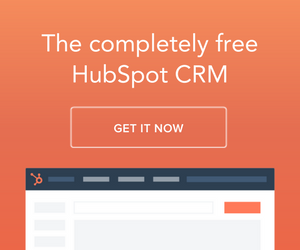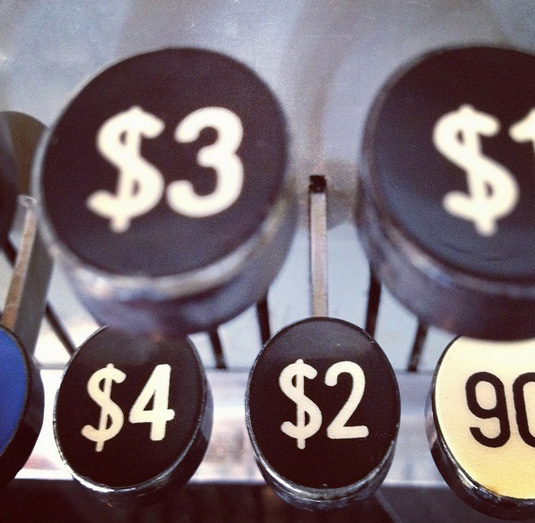 Your business website is only as good as its ability to get visitors to click around and ultimately make a purchase. Period.
Your business website is only as good as its ability to get visitors to click around and ultimately make a purchase. Period.
There are hundreds of millions of websites out there with millions more being added every year. You can’t just dial it in and assume that having a responsive design, slick graphics, and some quality content is going to be enough to get your phone to ring or your ecommerce shopping cart to fill up.
It all starts with traffic. The right traffic.
If your website isn’t being seen by your target audience, your website is useless. Take the time (make the time) to review your web analytics once a month.
Look at your pageviews, average time on site, and bounce rate (if you’re using Google Analytics) to see if there are any surprises (good or bad). Look at the number of visitors over a 90 day period and what percentage actually fill out your contact form—this will give you a sense of how much traffic you need month-to-month to hit your targeted number of leads or inquiries from your site.
If you're not getting targeted traffic to your business website, then it’s time to revisit your SEO strategy including your target keywords, your page titles, your meta descriptions, and your on-page content.
The key throughout this entire process really is to think like your customers. What types of questions do they have? What information would they search for? What content would be the most helpful? What can you bring to the table to make your perspectives, content, and website unique? Critical insights both in terms of search visibility, and also once visitors get to your site.
I like to start by looking at top-level navigation. Assume first-time readers are going to look at your site from top to bottom and left to right. That means you want to start with informational content first—your about page (who are you), your products and services (what do you have to offer), faqs (if relevant based on your business and your offerings), resources (your blog, documentation, support) and finally your contact page and/or shopping cart.
By prioritizing items in your navigation, you can lead them down a path where they are able to gather more information and get comfortable with your offerings before jumping right into making a purchase.
Think about the purpose of every individual page on your website.
What would you like visitors to do on that particular page? Contact your sales team? Learn more about product features? Sign up for your newsletter? Something else?
Just like with the navigation, not everyone is going to be ready to buy right out of the gate. That means you want to prioritize your calls to action on each page based on where they are in their customer journey. For some, that will mean signing up for your newsletter. For others, it will mean reading a few blog posts. The key is understanding the customer journey and where and how to engage with them based on where they are in that journey.
67.45% of online shopping carts are abandoned before the customer completes a sale.
Think about that for a second. More than 2 out of 3 online shopping carts are abandoned before completing a sale. Staggering. That means you can’t assume you’ve closed the sale just because customers add items to their carts.
The good news is there are some really creative and effective apps out there to help you salvage the sale. I’ve spoken with a number of businesses that are having great success using abandoned cart emails to recover lost sales, collect customer feedback as to why they abandoned their order.
Hiring a designer to create a business website is only one step out of many. Converting website visitors into customers requires think about how all of your content, images, calls to action, and navigation fit together to create a unique (yet functional) experience.
It’s okay to be unique and different—but you also need to be practical. In other words if you try to be too cute with your design and/or content, your visitors might not understand how to sign up for your newsletter or find your contact information.
Looking for ideas on how to convert more website visitors into customers? Request a complimentary website checkup.
[Image: Flickr user You As A Machine]
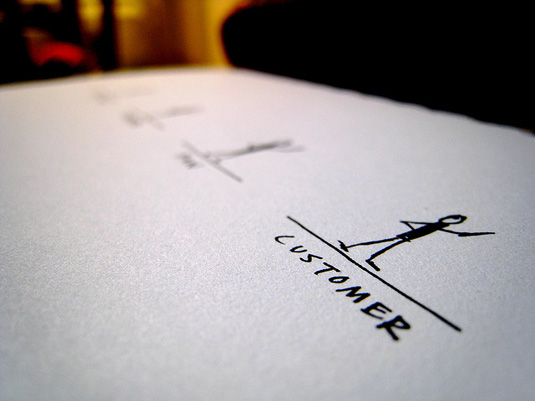 Customer experience. It’s what separates the great businesses from the hacks. The happy customers from the angry and frustrated. It’s the moment of truth.
Customer experience. It’s what separates the great businesses from the hacks. The happy customers from the angry and frustrated. It’s the moment of truth.
The second a prospective customer decides to interact with, and potentially buy from, your business, you’re officially on the clock.
Every interaction and touch point matters. You want (need) to create an experience they’ll not only remember, but one that will ultimately lead to a sale and their repeat business. That’s the obvious part. But to get there, you need a plan—a strategy built around customer experience best practices.
Recently I had a chance to speak with Lynda Smith, chief marketing officer of San Francisco-based Twilio, a software and cloud communications platform company, about the customer journey during their “Engineering The Customer Experience Roadshow.” Here are the top customer experience strategy best practices.
Map customer experiences from end-to-end
What should that very first interaction look like? What about what happens after they make the purchase? Do they have a smartphone? Answers to those questions will go a long way in helping you craft your strategy. “You work hard to draw visitors to your store, get people in the door, and make a purchase,” said Smith. “Mapping the customer experience from end to end helps make their buying experience one they’ll remember,” she added.
Don’t overlook the small things—including how (and who) answers the phone. Anticipate potential questions and requests and develop a plan to make sure your staff has the right resources, training, and technology to help.
Focus on every customer interaction
I’ll never forget the time I called a local pizza shop and asked for any recommendations from the person who answered the phone. “I’m not sure. I have a flour allergy.”
Read More >> Setting Customer Expectations (Without Totally Blowing It)
Besides her questionable career choice of deciding to work at a pizza shop with a flour allergy, she totally blew it. Instead of focusing on a negative, she could have just as easily shared recommendations based on customer feedback. She was on the front lines. Our only interaction with that business. And not surprisingly, we haven’t been back.
Provide exceptional customer support
Customers are going to have questions. They’re going to need support. Support that’s personalized, friendly, and professional.
Zappos built an empire on it.
Think back to the customer experience mapping mentioned above. Do you make it easy for someone to get in touch with your business if they have questions? Or do you bury your phone number in the footer of your website or way down on your contact page? Do you acknowledge receipt of their inquiry? Do you follow up in a timely fashion (within 24 hours at the absolute latest).
Finally, don’t assume the customer experience ends once someone makes a purchase. Depending on your product or service, that could be the beginning of their journey.
Maximizing the customer experience “moment of truth”
How do you interact with your customers? Where can you create a better experience? “It’s all about the moments of truth. Once you’ve got their attention, what are you going to do with them?” A parting question from Smith that all businesses need to answer.
Share your thoughts in the comments below.
[Image: Flickr 10ch]
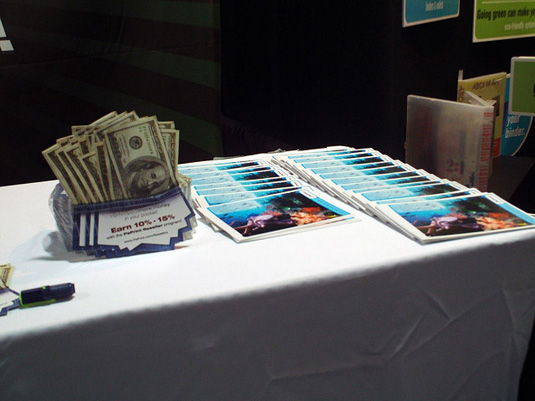 Give someone a branded stress ball, and your business will be remembered until that stress ball gets thrown out in the hotel room trash.
Give someone a branded stress ball, and your business will be remembered until that stress ball gets thrown out in the hotel room trash.
Create a memory and a unique experience and that’s when you have something special--a meaningful connection that could turn into a potential client or strategic partner.
When done right, trade shows can be an incredibly effective place to generate brand awareness, meet new contacts, and showcase your latest and greatest products and services.
But your success starts long before you arrive at the convention center or hotel ballroom with your spinner and the massive display that’s part origami, part mechanical engineering project.
If you want to make the most of your trade show spend, you need a plan leading up to, during, and after the event.
Marketing before a trade show
Start to let current and prospective clients know you’re going to be going to be exhibiting at XYZ trade show approximately 45 days out. This can include personal interactions, mentions in email newsletters, and via social media (make sure to include any relevant hashtags).

You also want to monitor your social networks for mentions from contacts about attending the trade show and follow up where it makes sense.
Always look for opportunities to schedule appointments (dinner, coffee, etc.) with partners, stakeholders, and customers during the show. Also think about other businesses and people you want to meet ahead of time. That way you can do some background research and make the most of your time during those initial interactions.
Of course it wouldn’t be a trade show without thinking about your booth—what promotional items make the most sense and most importantly what’s going to help get your business noticed.
It’s okay to be creative and cute with your display, you just want to make sure it’s relevant to your business. John Greathouse profiles how Central Desktop was able to employ a cigar-smoking, bearded angel with an exaggerated New York accent to get some amazing buzz during the San Francisco ad:tech conference in an article for Forbes—definitely a must read for any trade show exhibitor.
The halo? The harp? Tied directly to their move to the cloud? Brilliant.
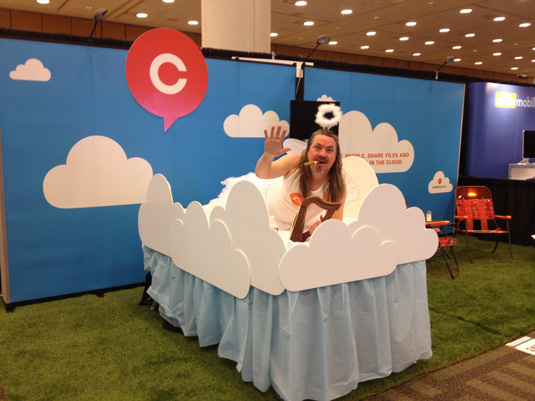
You’ll also want to check out this article from John on another creative trade show marketing success story.
Marketing during a trade show
I know it can be exciting for some to be away from the family, stay up late, and throw back a few too many cocktails. Remember why you’re there—to meet prospective clients and promote your business. That means you should be easily approachable any time you’re at your booth, mingling with colleagues, riding in an elevator, etc.
And speaking of booths and approachability, those uncomfortable folding chairs are not your friends. If you’re physically able, make sure you wear some sensible shoes, stand up, and get away from behind the table to eliminate any unnecessary barriers to conversations and personal connections.
Notice the focus on personal connections. Collecting hundreds of business cards in a fishbowl doesn’t mean anything if you’re not going to do anything with them. Remember you’ve likely spent a significant amount of time and money on travel, booth fees, displays, promotional items—don’t let your investment go to waste.
Marketing after a trade show
Follow up with relevant contacts. I know that sounds obvious, but you’d be surprised at how many times businesses never get around to what’s arguably the most important outcome from the trade show. If a connection is local, find a time to meet over coffee or at their location so you can build upon the dialogue that started during the event.
In addition to individual follow up, consider generating some content attendees (and those who were unable to make it) would find helpful. This could include a recap, insights into emerging trends, observations, or even responses to questions you received during the event. Content is a great way to drive prospective customers and clients back to your website and also expand your reach to others who find the post online after the trade show.
ExactTarget always hits content out of the park around their Connections conference. Here’s a quick snapshot of some of the creative articles from last year’s event. Something like “The Top 10 Tweet-Worthy Moments” and “The Survival Guide to Connections #ET13” could be a great fit for any trade show.

Above all, maximizing your trade show spend requires a plan that reflects your unique value proposition and the personality of your business AND one that will resonate with potential clients.
It’s okay to employ a cigar-smoking, bearded angel with an exaggerated New York accent—but you better make sure there’s a clear connection with your brand. If not, you could have just saved your money and ordered some of those stress balls.
Looking for more trade show marketing tips? You’ll love this post >> The Inbound Way to Do Trade Show Marketing.
[Images: Flickr user Trisha Fawver and Central Desktop]
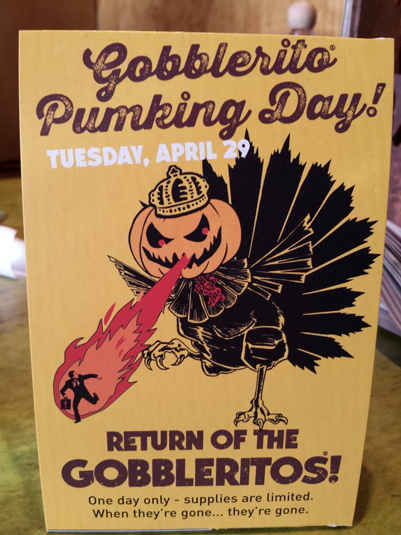
They build anticipation and excitement. They give your customers a reason to shop at your small business or restaurant on one specific day out of the week, month, or year.
When done right, one day only specials can be an incredibly effective way to generate buzz and drive sales.
But you don’t have to wait for Presidents Day, Black Friday, Cyber Monday to make a splash. In fact, it’s better if you don’t.
The Return of the Gobbleritos
Wait…what? Gobblerito? What the heck is that?
Think Thanksgiving dinner in a burrito. It was created by the folks at Mad Mex, one of my all-time favorite local restaurants.
They totally made it up and it’s something they roll out at different times throughout the year.
Read More > Retail Psychology: Why Shoppers Can’t Resist a Sale
It’s not a regular menu item. And that’s the key. That’s what helps build anticipation. In fact, they roll it out at times when Thanksgiving dinner is the farthest thing from your mind. Almost counterintuitive. And people line up.
Mad Mex does a lot of things well when it comes to marketing and “The Return of the Gobbleritos” is no exception.
They created a custom Facebook cover photo…
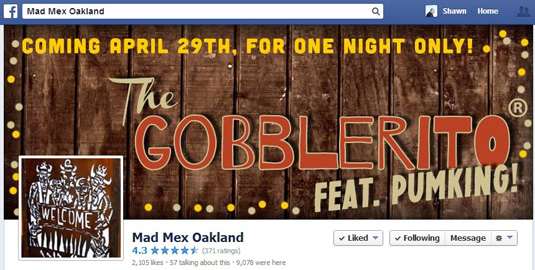
and used social media to promote the event a few weeks out and the day of (notice the relevant hashtags)…

They used table tents and signage to spread the word to patrons. And people line up.
Read More > Why Small Businesses Still Need Old School Marketing Tactics
Beyond creating buzz with a one day only special, they really do a great job of messaging. Take another look at the table tent pictured at the top of the post.
First things first—it’s going to grab your attention. A giant turkey with a pumpkin head (a cross promotion with Southern Tier Pumking Drafts). The turkey is breathing fire—enough to pull anyone in.
But there’s more.
“One day only.”
“Supplies are limited.”
“When they’re gone…they’re gone.”
Even if you had no idea what a Gobblerito is, I’m going to guess that messaging is at least going to make you ask. And that starts a conversation. Which is exactly what every marketer wants.
If you’re looking for ideas, try Googling obscure holidays to see if there’s anything that fits with your small business, your products, and your brand. Consider putting a different spin on an existing product or service. And above all—get excited. Your customers will notice.
Think about your small business and your B2B or B2C products. A one day only special can work whether you’re selling Gobbleritos, industrial cabinet hardware, t-shirts, or lawn mowers.
How might you be able to use a one day only special to generate more customer traffic?
Share your thoughts and questions in the comments below.
By: Shawn Graham
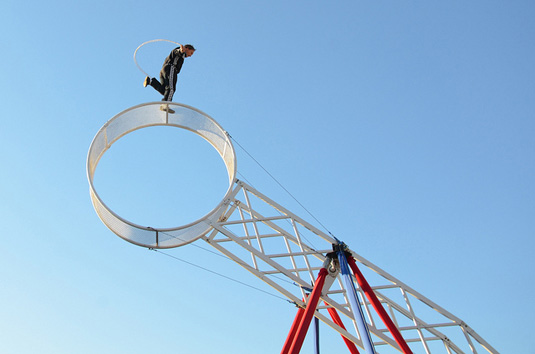 You control your own destiny. In most cases, you have the ability to set expectations with your customers and then meet (or hopefully exceed) those expectations.
You control your own destiny. In most cases, you have the ability to set expectations with your customers and then meet (or hopefully exceed) those expectations.
Unfortunately all too often, businesses make promises only to drop the ball and totally blow it with their customers.
Setting realistic expectations with customers and then actually following through on those expectations are two totally different things.
I’m not talking about shooting for the moon and settling for the stars kind of stuff—I’m talking about telling a customer you’re going to give them a follow up call on a certain day, or saying you’re going to do something. And then you don’t.
Read More > 3 surefire ways to manage customer expectations
Anytime I get an automated call tree, I immediately assume I’m going to be on hold for a while. I set my expectations just about as low based on my previous experiences.
On one particular call, I heard an automated prompt for my estimated hold time. My ears immediately perked up. I was mentally prepared to wait 10 minutes or longer. The prompt said two minutes. I shifted my expectations. I started to get excited. I could see the light at the end of the annoying calling tree tunnel.
Three minutes went by. Then four. Then seven. I rep finally picked up 10 minutes later. Instead of improving my customer experience by setting expectations around my estimated hold time, the system actually made matters worse.
But it’s not just about automated call trees, it’s about setting and managing expectations with each and every touch point.
Read More > How to build a better customer loyalty program for your local market
You can’t always control the expectations your customers are already bring to the table. But you can control the expectations you set.
If you tell your customers you’re going to do something, you need to do it
It doesn’t matter how big or how small the task—once you offer it up, you’re officially on the hook. You’ve set the expectation. It’s up to you to follow through.
Just stop and think about your own experiences as a consumer. How many times have you had a business tell you they were going to do something and then totally drop the ball?
Managing expectations requires a process
Whether you use a Post-it note, smartphone, or full blown customer relationship management (CRM) system, make sure you keep track of any and all outstanding action items and most importantly—their due dates.
Read More > 5 affordable CRM solutions for small businesses
And if something comes up and you can’t hit the mark, let your customers know as soon as possible.
Even a “We’re still waiting on XYZ. As soon as it gets here, we’ll give you a call. We just didn’t want you think we’ve forgotten about you” is better than nothing at all. There’s always a chance they’ll still be frustrated, but at least you’re keeping them in the loop—and managing their expectations.
The last thing you want to do is promise something to you customers and under deliver.
By: Shawn Graham
[Image: Flickr user David Amsler]
More Entries »
 Your business website is only as good as its ability to get visitors to click around and ultimately make a purchase. Period.
Your business website is only as good as its ability to get visitors to click around and ultimately make a purchase. Period. Customer experience. It’s what separates the great businesses from the hacks. The happy customers from the angry and frustrated. It’s the moment of truth.
Customer experience. It’s what separates the great businesses from the hacks. The happy customers from the angry and frustrated. It’s the moment of truth.  Give someone a branded stress ball, and your business will be remembered until that stress ball gets thrown out in the hotel room trash.
Give someone a branded stress ball, and your business will be remembered until that stress ball gets thrown out in the hotel room trash.





 You control your own destiny. In most cases, you have the ability to set expectations with your customers and then meet (or hopefully exceed) those expectations.
You control your own destiny. In most cases, you have the ability to set expectations with your customers and then meet (or hopefully exceed) those expectations.